The Covid-19 pandemic has taken a unique toll on Asian Americans and Pacific Islanders. People from these communities have experienced alarming vulnerabilities to the pandemic because they are more likely to live in multigenerational families with older relatives, and they are heavily represented among essential or frontline workers. Concentrated in compromised sectors, such as food and service, many Asian-owned businesses now face severe financial loss and an uncertain future.
In the early months of the pandemic, Asian Americans in San Francisco accounted for almost half of the city's Covid-19 deaths. In California and in at least ten other states, Native Hawaiians and Pacific Islanders have died at the highest rates of any racial or ethnic group; nearly one-third of the U.S. nurses, who have died from the virus, are Filipino American. And today, people with family in India are braced with anxiety over the well-being of loved ones with each news report of the country’s current Covid crisis.
Hate crimes, including murder, physical attacks, property damage and slurs over the past 12 months, have increased by a reported 150 percent. In March, six Asian American women and two others were killed in an Atlanta-area spa by a gunman, who now faces murder and hate crime charges. Less than a month later, four members of the Sikh community in Indianapolis were among the eight gunned down in a FedEx warehouse.
Powerful work is being done as a host of organizations rise to these challenges, stepping up to make a difference. The Pacific Islander Covid-19 Response Team is a national group of researchers, health experts and community leaders, who are addressing underlying health-care disparities. Grassroots volunteers working for the San Francisco Peace Collective are patrolling the streets of Chinatown to support and assist residents. The Auntie Sewing Squad, a national collective, turned living rooms into “sweatshops” to craft and provide masks and proper PPE to essential workers and vulnerable communities. Equality Labs continues their anti-casteism and anti-racism work through community organizing, research, and protest and digital security training; while Asian Americans Advancing Justice offers bystander intervention training.
As historians, curators and educators, we are responding with a “beckoning”—inspired by a song of this name recorded by the 1970s jazz-fusion band Warriors of the Rainbow comprised of the musicians Russel Baba, Gary Fitzgerald, Nobuko Miyamoto, E.W. Wainright and Benny Yee. Coming of age during the Vietnam War and U.S. civil rights struggles, the band was made up of Northern and Southern Californians, Black and Asian artists and purveyors of different musical genres. The casualties of their era’s crises and conflicts included their friends, lovers, family members and community heroes. “With all the bumps and curves and blunts that we've taken,” says band member and singer Nobuko Miyamoto, “we still have to play life and play it well.”
In their song “Beckoning,” composed by Russel Baba, Warriors of the Rainbow delivered an unjaded ode to life’s joys and beauty with a breezy refrain that urges us to “Listen to the music!” So we beckoned to friends from near and afar to compile this playlist as we emerge from a year in which we were forced to stay physically apart, as we mourn the losses we have individually and collectively suffered, as we continue to grapple with persistent injustice and hate.
Music carries a special power—to physically and emotionally move us. It connects us to other people and places. Through these tracks, we call up the ancestors, stay present and look to the future. We invite you to explore the diverse ways through which Asian Americans and Pacific Islanders use music for affirmation and consolation, as a call to action and to find their joy.
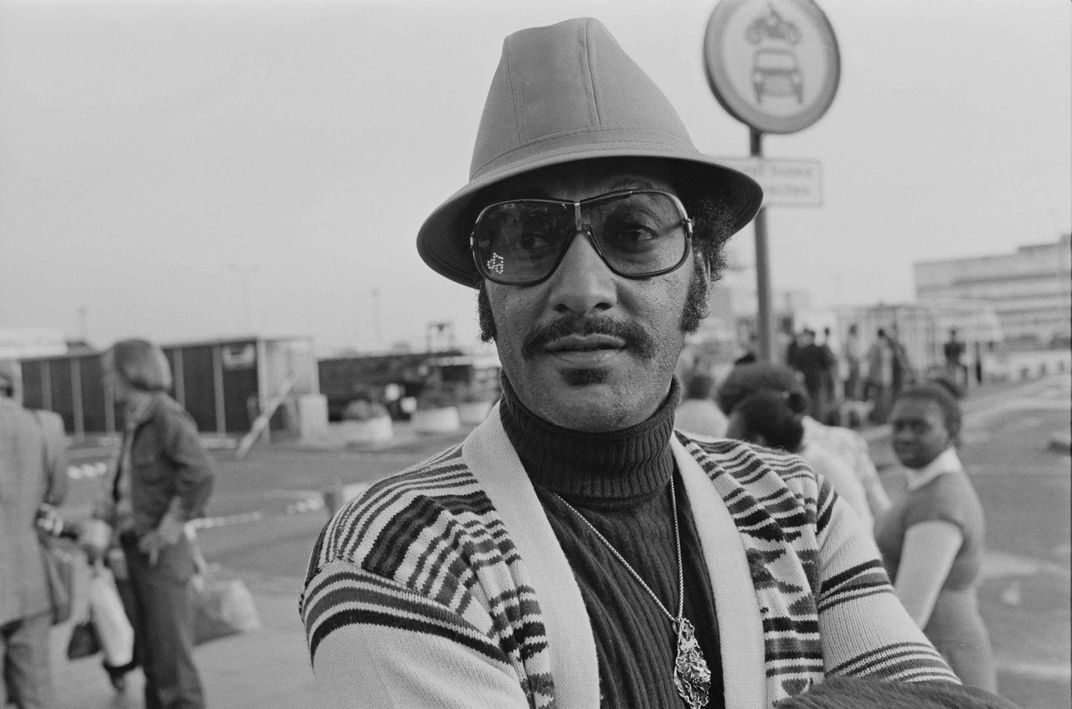
Beckoning by Warriors of the Rainbow: The playlist's title track was composed by Russel Baba and performed by the jazz-fusion band Warriors of the Rainbow. Survivors of the tumultuous 1960s, the band offered an unjaded ode to life’s joys and beauty through spirited solos and a breezy refrain that urges us to “Listen to the music!” This track is on Nobuko Miyamoto’s new Smithsonian Folkways album 120,000 Stories. —The authors
Us by Ruby Ibarra, featuring Rocky Rivera, Klassy, and Faith Santilla: This is one baaad sistah! She not only wrote and performed the rhymes, but managed to direct the song’s video, too. In this harrowing time when Asian Americans are targets of violence and our women are murdered and remain nameless for days, I see this song and video as a needed statement. This is woman power, Pinay power, “don't mess with me” power. And in the video, I love how they seamlessly weaved tradition with the contemporary, with a passion. —Nobuko Miyamoto, songwriter, Great Leap/Smithsonian Folkways
Trip Advisor by Vallé: Vallé's “Trip Advisor” is both turn up and church. As one of the most well-known contemporary PNG rappers, Valle’s “Trip Advisor” is a dope compilation of beats and cadence touching on perspectives that are distinctly Pacific Islander. Shout out to all those Pacific Islanders (at home and in diaspora) who continue to make homes out of themselves and all the places in between. #freewestpapua —Moana Palelei HoChing, founder, Pasifika First Fridays
It’s the Same Old Song by the Four Tops: Who doesn't love Motown? I appreciate this song's infectious energy as a pick-me-up in trying times. And I recently learned that Abdul "Duke" Fakir, the band's only surviving member, is half Bangladeshi and half Ethiopian. His father was among the earliest wave of South Asian immigrants who moved to Detroit to work in the automotive factories. Detroit is now home to one of the U.S.’s largest Bangladeshi communities. Despite perceived tensions between AAPI and Black communities, family histories like this highlight how our communities have intersected, collaborated and been an inextricable part of each other's stories. —Nafisa Isa, program manager, Smithsonian Asian Pacific American Center
Posing in Bondage by Japanese Breakfast: Japanese Breakfast (aka Michelle Zauner, a Bryn Mawr alum who studied with the renowned scholar Homay King) just published a memoir called Crying in H-Mart about grieving in and through food, and understanding ourselves through taste and memory. Her latest single, "Posing in Bondage," extends that world. The video, shot at a Super A grocery near me, captures thwarted connections from our year of isolation, punctured ever so slightly by a taut, wavy noodle offered by another from that familiar styrofoam cup. —Karen Tongson, chair and professor of gender and sexuality studies, University of Southern California
Space by Audrey Nuna: Audrey Nuna is one of the most exciting emerging artists of the moment. She’s a young Korean American musician from New Jersey, and we can’t stop listening to her. Audrey has serious musical chops, her visuals are stunning, her looks and vibe are captivating—she’s the full package. She’s building steadily with a great management and label team behind her, and we’re just so excited to see her grow over the next year. —Grace Lee, Caroline Yim, & Zeena Koda, co-founders, Asian American Collective
Song to a Child by Chris Iijima: Chris Iijima is better known for his work with Nobuko Miyamoto and Charlie Chin on their groundbreaking 1973 LP, A Grain of Sand. “Song to a Child” is a gorgeous lullaby where I picture him singing to one of his boys. It appeared on a 1977 anthology of conscious music assembled by singer and activist Barbara Dane for the label she co-founded with her partner, Irwin Silber. With equal measures of soulfulness and tenderness, Chris reminds a sleepy child to work for others facing the darkest of times while always being a source of light. —Theo Gonzalves, interim director, Smithsonian Asian Pacific American Center
I’m Kissing You by Des'ree: Never has a song blended so much impossible wanting than this one. It is hauntingly simple and yet, says everything all of us who’ve been in love, but can’t be in love, have felt. This impossible tug of war between what you want and what you can have is uniquely Asian American: An implicitly hyphenated, “in-between” experience. Am I Asian or American? Are they the same? Are they different? When? Does it matter? Can I have the job of my dreams even if I don’t break a ceiling? If this is home, why do I feel like a guest? —Bing Chen, president, Gold House
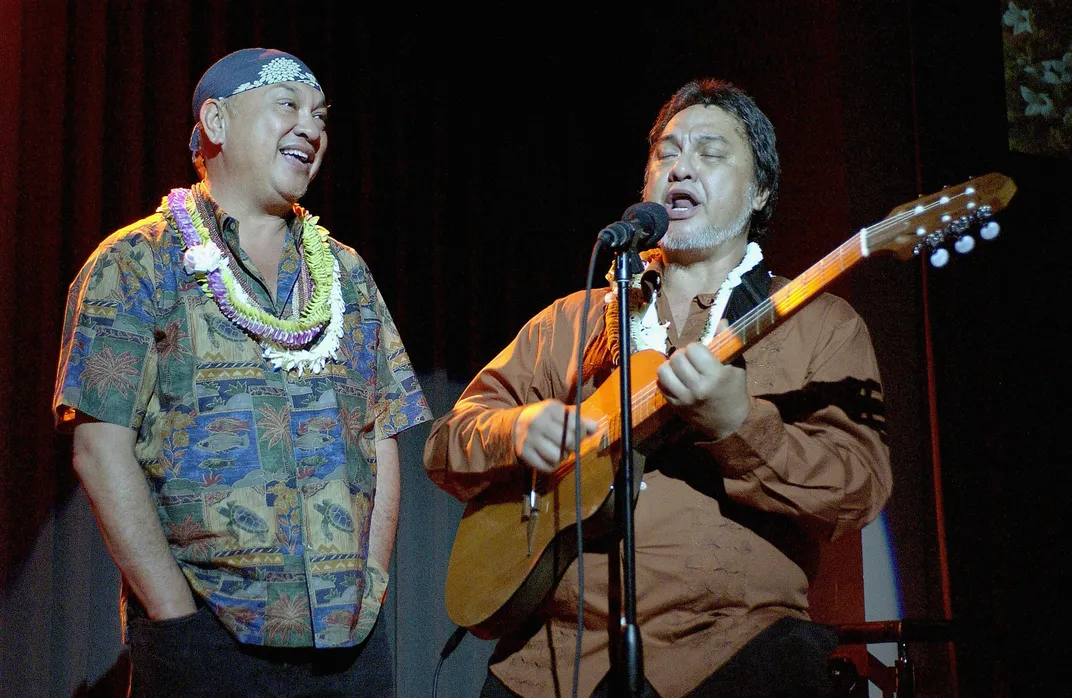
Kamalani O Keaukaha by The Brothers Cazimero: The Brothers Cazimero perform quintessential Hawaiian music and they are embedded in the soundtrack of my youth. In this current moment, I find myself contemplating the simplicity of youth, and I search for the sounds I listened to as a child. Robert’s glorious baritone with soaring highs; Roland’s soaring falsetto; the mysterious chord progressions on guitar; the sounds that beckoned me in and bade me to let go of the Earth for a while. —Aaron J. Sāla, director of cultural affairs, Royal Hawaiian Center
Magic by Treya Lam: Treya Lam’s “Magic” perfectly captures the mixture of love, loss and hope that I felt throughout the pandemic. The song was originally written as a gift for a close friend who just had a child; the chorus was written the week of the Sandy Hook shootings. Given life’s fragility, the song urges us to create and hold onto the magic in our lives. The desire to hold onto childhood is fairly universal; for transnational adoptees like Lam, this feeling is probably even stronger. —Eric Hung, executive director, Music of Asian America Research Center
Not Yo' Butterfly by Nobuko Miyamoto: Nobuko Miyamoto sings a manifesto for women of color self-determination. This song speaks to this moment in the spring of 2021, at a juncture when anti-Asian violence and the murders of the women in Atlanta have sharpened up a widespread, overdue awareness that Asian American women face longstanding intersectional oppressions. —Deborah Wong, professor of ethnomusicology, University of California, Riverside
Today by The Smashing Pumpkins: As a kid, seeing James Iha's face in my favorite band performing on Saturday Night Live completely blew my mind and gave me the confidence to keep pursuing my dreams. —Far East Movement, partner/artist, Far East Movement/Transparent Arts

Shades of Reason by Marginal Man: This 1980s song of youth yearning sounds today like an anthem for all those longing to leave the past year in the dust. Guitarist Kenny Inouye and bassist Andre Lee were two of the five members of Washington, D.C.'s punk band Marginal Man. When I was a teenager, their presence on the stages of local clubs signaled to me that the makers of D.C.'s storied hardcore scene were kids of all sorts, including Asians. That itself was a loud statement. —Sojin Kim, curator, Smithsonian Center for Folklife and Cultural Heritage
Place in the Country by Fanny: Founded and led by Filipina American sisters June and Jean Millington, Fanny is one of the most important and influential bands in history for their groundbreaking music and rejection of style and expectations of women in rock. Starting with the song title, this speaks to the frustration of having to constantly prove that we belong in this country as Americans. Furthermore, this track captures the angst, vigilance and desperation as our community faces increased violence, especially against women and the elderly. —Richie Traktivist, founder, DJ, & music archivist, TRAKTIVIST
Like a G6 by Far East Movement, featuring The Cataracs, DEV: I chose this song for a couple of reasons: Every time I heard it in clubs and on the radio I was filled with such pride that a group of Asian Americans had a hit record. Combine that with what Far East Movement has done for the culture and their continued support of Asian/Asian-American music, I knew they had to be on this playlist. Plus, the song is just fire! —Marisa Pizarro, SVP, A&R Def Jam, Universal Music Group
How You Like That by Blackpink: In general, this song captures how I feel about those who wish to bring us down. It represents how we can prevail over these current times as well as focus on the positives of our communities. —Theresa Kang, CEO, Blue Marble Pictures
Good Writtens Vol. 13 by G Yamazawa: G Yamazawa is a gifted, Japanese American MC with a wicked, alacritous flow, whose slight drawl reveals his Durham, North Carolina, roots. This latest in his “Good Writtens” freestyle series uses the beat from Cardi B’s hit, “Up,” as the sound bed for a pointed social commentary about anti-Asian violence as well as the complexities of a newly activated wave of Asian American activists. It’s not every day you hear Yuri Kochiyama’s name appear in a rap song. —Oliver Wang, sociology professor/cultural writer, California State University, Long Beach
Le Ila by Jay Shootah: Having spent a lot of time in American Samoa and the outer islands (Ofu,Taʻu), this song takes me back to the place and the people of this awesome Pacific culture. The song is influenced by American hip-hop, but is Samoan at its core. At the end of the day, music has the power to heal and make change in ways that speech or physical action cannot. It can codify a time period, sonically capturing a moment in human history. —Kālewa Correa, curator of Hawaiʻi and the Pacific, Smithsonian Asian Pacific American Center
"Letter to Our Unborn Children" by I Was Born with Two Tongues: I discovered the Asian American spoken word group I Was Born with Two Tongues during a time when I was searching for voices to help me feel less alone. In 2000, it seemed impossible to find Asian Americans reflected in the media, and the album Broken Speak embodied a fierceness and passion that awakened my own sense of art and community. "Letter to Our Unborn Children" stands out two decades later, just as urgent, still as powerful and enduringly healing. —Adriel Luis, curator of digital and emerging practice Smithsonian Asian Pacific American Center

Never by jennylee: I go to this song and jennylee's album Right On! when I'm feeling wistful, uncertain, hopeless, hopeful. By the time "Never" is over (it goes on repeat, especially when I need to think), I am ready for the next thing, whatever that may be, slightly more inspired, slightly more settled with ambiguity, but overall, feeling really good. This song is more of a feeling and mood I seek from time to time, especially in moments of great uncertainty. —Andrea Kim Neighbors, manager of education initiatives, Smithsonian Asian Pacific American Center
Moonchild by Cibo Matto: Aside from Mike Park and some ska bands, Cibo Matto was one of the few obviously Asian American groups I knew of as a Taiwanese American kid growing up in New Orleans. They showed incredible versatility in their music, particularly in the album Stereo Type A. They gave me a beacon as an aspiring teen punk rocker. “Moonchild” is a song that I've always loved for its ability to bring me back to earth. —Kevin M. Lin, co-founder, Twitch
Universe by Thuy: Thuy is a Vietnamese American artist from the Bay Area, and I fell in love with her voice truly at first listen. “Universe” is a ballad in which she captures the pure essence of love. She wrote the song for her dog Ollie. That idea made me laugh and appreciate the song even more, thinking about the love and joy that our family dog Diamond has brought our Korean American immigrant family over the past 15 years. —Suzy Ryoo, co-founder and president, Q&A
Chicken Adobo by Guapdad 4000 and !llmind: GRAMMY-nominated Guapdad 4000 and GRAMMY-award winning producer !llmind team up to create “Chicken Adobo,” which will be heard for generations to come. Released during the pandemic, the song not only shares a message of home-cooked, soul-filling love, but also helps raise awareness for chicken adobo, served at family-owned restaurants across the world to a growing multicultural audience. The duo’s 1176 album represents the new MYXed generation that celebrates diversity and similarities at a time that we need it the most. —Roslynn Alba Cobarrubias, global head of talent, MYX Global, ABS-CBN; founder, ROS. Marketing
Dawn by The Mahavishnu Orchestra: This song has no vocals, but the instrumentation expresses how I feel about the current state of Asian Americans in this country. It’s a bitter sweet experience. There’s a lot of sadness as we’re facing acts of violence against us and at the same time becoming more visible, not only in the media but to people around us. This song has moments of gloom and celebration at the same time. —Jon Park (Dumbfoundead), artist
Combat Breathing by Vijay Iyer Trio: I am really enjoying the new album “Uneasy” by pianist Vijay Iyer with bassist Linda May Han Oh and drummer Tyshawn Sorey. This track sticks with me because it suggests the challenges of keeping confidence, pace and breath in the face of adversity (i.e. Covid-19, systemic racism against Black lives, attacks on Asian Americans). The laid-back groove that Sorey initiates, juxtaposed with the 11/8 meter, anticipates a battle. There’s steadiness yet nerves in preparation for the uneasiness in which we now find ourselves. Both Iyer and Oh take beautiful solos before an intense dialogue between all three artists, and then the ending—delicate beauty from these human beings. —Sunny Jain, composer and drummer, Smithsonian Folkways, Red Baraat
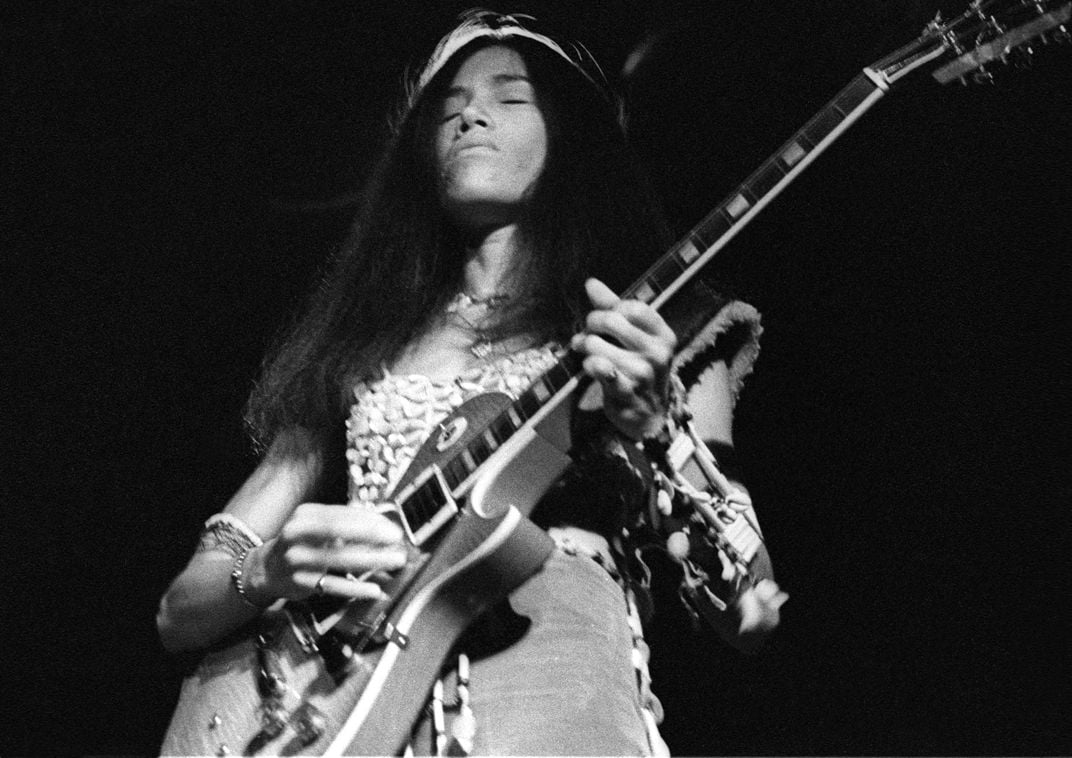
We Need Each Other by Nikbo: “Rage is power. And hope’s a drug. But grief is love,” belts Oakland-based Filipinx artist Nikbo in her movement anthem. Released in 2021 amidst weekly extrajudicial killings in the Philippines, ongoing struggles against anti-Blackness, police brutality and increasing anti-Asian violence, Nikbo’s transnational rallying cry assembles “peace defenders, tender artists, punks + lovers, and broken-hearted.” Her layered vocals over pounding beats uplift us from pandemic isolation, gets us deep into our feelings, and back onto the streets. —Elaine Kathryn Andres, producer, RE: Out of Office; Ph.D. candidate in Culture & Theory, University of California, Irvine
Feel It Out by Yaeji: This track sounds and feels like this past year—seemingly unperturbed, suffused with uncertainty and instability, tormenting impossibility of catharsis. I hear the coolly delivered refrain—“See that it’s more than one thing. Open up in a new way; open up on a Monday!”— as: 1) Yaeji’s own transnational double (or maybe quadruple) consciousness; 2) a quiet refusal to be fixed in place as one thing, and; 3) a reminder of the political possibilities of the in-between. —Yun Emily Wang, assistant professor, Duke University
homebody by mayx: In this long moment of quarantining and solitude, I love this ode to being a homebody by mayx (pronounced “makes”), a music maker from the Bay Area. I asked them about it, and they wrote the song as a love letter to themselves—as an ode to the interaction of their introversion, anxiety and transness. It’s a dance track for nights alone in your room, when you want to be moving but don’t want to be perceived by other people. —Lawrence-Minh Bùi Davis, curator of Asian Pacific American Studies, Smithsonian Asian Pacific American Center
The Kiss of Venus (Paul McCartney) by Dominic Fike: Dominic reimagines a McCartney recording, effortlessly shifting the original focus of astrology to shedding light on current affairs. His infectious rendition compels the listener to ponder on various narratives set by the news. He vocalizes, “Have you read the Paper? People talking about which side they’re taking... what’s your take on it?” In a world where people clamor to any given narrative, I love the idea of questioning the status quo and forming your own opinions. —Byron Atienza, VP, global creative, Capitol Music Group
Tinh Yêu Tuyệt Vời (The Greatest Love) by CBC Band: I considered two recent songs, “Everybody Wants to Love You" by Jbrekkie and "Your Best American Girl" by Mitski, both of which highly influenced the No-No Boy project. I went with the CBC Band’s “Tinh Yêu Tuyệt Vời.” One of the best South Vietnamese rock bands during the war, this psych-rock refugee family band’s contributions to the essential Saigon Rock & Soul compilation lit a fire inside my repressed Viet self and partly inspired one of my best songs. —Julian Saporiti, musician and scholar, Smithsonian Folkways

Imagine by Yoko Ono: Yoko Ono’s Grapefruit is more a set of instructions, than a song. I find these useful when I’m stuck:
Imagine the clouds dripping.
Dig a hole in your garden to
put them in.
— 1963 Spring
This collection inspired her husband, John Lennon, yet he omitted her conceptual and lyric contributions. In 2017, after nearly 50 years, Ono finally received co-credit on the song “Imagine.” I include this track with Ono’s voice, no longer hidden. —Byron Au Yong, composer, University of San Francisco
Cello Suite No. 1 in G Major, Prélude (J.S. Bach) by Yo-Yo Ma: This is a piece that allows me to feel the artist’s touch and ease. And I connect because the melody is predictable—so unlike the times in which we live. Yo-Yo Ma expresses a oneness between the music, the instrument and the human being that connects all of it. —Angela Oh, National Advisory Council member, Asian Americans Advancing Justice
Makawalu by Punahele, featuring Hualalai Keohuloa: Like many words in ʻŌlelo Hawaiʻi, “makawalu” has multiple meanings. It is a compound word that literally translates to “eight eyes,” but it can also mean “multiple perspectives,” “numerous” as well as “traveling in large companies” or “an irregular formation of warriors." For Punahele, the Na Hōkū Hanohano Award winner from Mākaha, Oʻahu, the song is about being on a waʻa (canoe) to connect to our pasts and to see what isn’t normally seen. Appropriately, the song features Hualalai Keohuloa, a canoe builder and fellow musician from the Big Island. Layered over beats by Ohtoro, the song was created in cyphers while at `Iolani Palace and protecting Maunakea and more broadly, indigenous rights. With its references to other parts of Oceania and the importance of genealogy, the song propels us to open our eyes and see what lies on and beyond the horizon. —Rod Labrador, associate professor and academic advisor, University of Hawaiʻi at Manoa, Department of Ethnic Studies
Sorry Song by Brian McKnight: I love this song because it demonstrates cross-cultural engagement between an American artist and Filipino culture. Brian McKnight's singing in Tagalog brings to light how people of different cultures can share, find meaning and highlight that we are not so different. —Mary Talusan, assistant professor of Asian-Pacific Studies, California State University Dominguez Hills
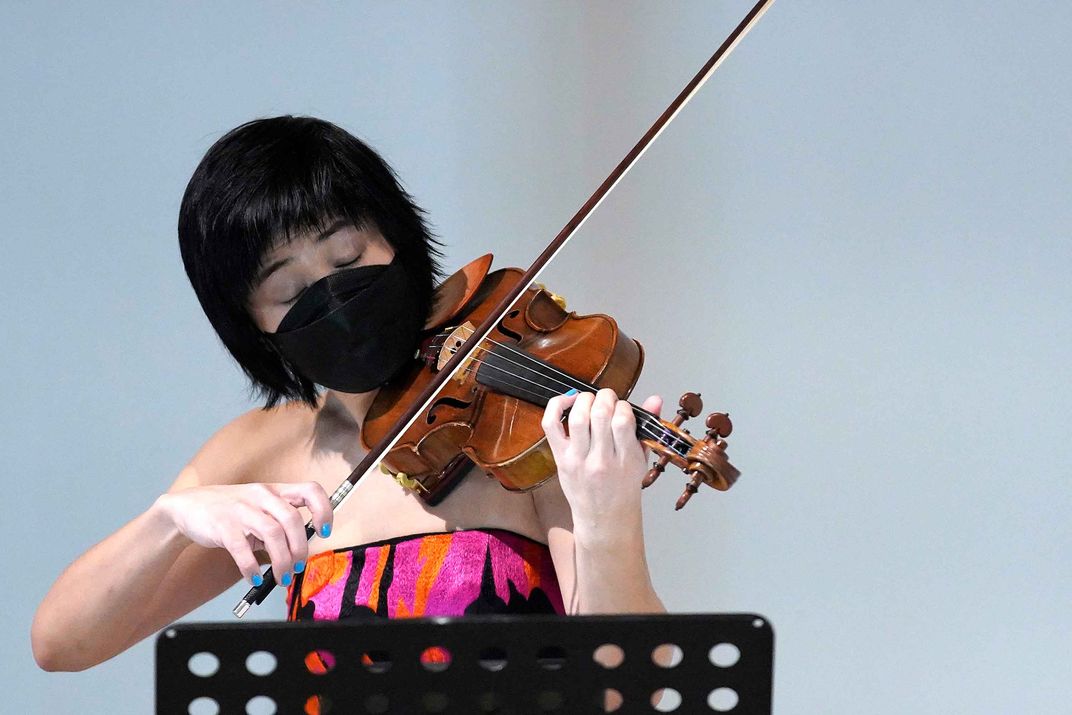
Her Latitude by Jennifer Koh & Wang Lu: Of the many Asian Americans in classical music today, violinist Jennifer Koh is among those with the boldest vision and the strongest voice. Koh does not shy away from speaking out about issues of racial justice, equality and decolonization in, through and beyond classical music. In “Her Latitude,” she collaborates with Chinese-born composer Wang Lu and creates a soundscape that traverses across the natural and the human worlds, peace and disturbance, where we come from and where we are now. —Mari Yoshihara, professor and chair of Asian American studies, University of Hawaiʻi
Once There Was Only Dark by Patrick Shiroishi: When Patrick Shiroishi recorded this album in 2016, it was a meditation on the Japanese American incarceration camps where his grandparents met and married, set against the grim new reality of the election. When I first heard it in 2020, I didn’t know any of that. I only knew it sounded like the swells of anxiety I felt in the first months of the pandemic, in a very different kind of confinement: frenetic thoughts over a drone of stillness, stagnation. —Elisa Hough, editor and web manager, Smithsonian Center for Folklife and Cultural Heritage
Moner Manush by Anupam Roy, featuring Satyaki Banerjee & Babul Supriyo: This Lalon geeti is the soundtrack of my childhood. “Moner Manush” translates to "person of my heart/mind,” and it’s a song of longing, connection and reverence for the Most High. The Bangladeshi activists I grew up with would listen to this. —Sharmin Hossain, co-director, Queer Crescent Healing and Bangladeshi Feminist Collective
Neo Geo by Ryuichi Sakamoto: In 1987, when I was young, music was everything. Japanese keyboardist and activist Ryuichi Sakamoto released his trans-Pacific album Neo Geo or “New World” with co-producer and Illinoisan Bill Laswell. Bostonian jazz king Tony Williams drummed with Jamaican reggae heavyweight Sly Dunbar on syndrums. Parliament-Funkadelic’s Bootsy Collins played bass. On the title track, the voices of Okinawan folk singers, Kazumi Tamaki, Misako Koja and Yoriko Ganeko ring beautifully and monophonically as Sakamoto scats like taiko drums. For me, the musical collision, that cooperation of generous souls, is just as fresh and giving today and returns me to that place where music is everything and everything is possible. —Charlie Weber, media director, Smithsonian Center for Folklife and Cultural Heritage
Rock Bottom Blues by Fanny: This song, by a 1970s band led by Filipina American sisters June and Jean Millington, could be the story of every struggling musician. It’s especially poignant today when one thinks about the discrimination that these brown women had to overcome throughout their lives and their careers. June Millington says: “It wasn’t worth paying attention to. You may as well have been paying attention to all the holes in the road.” They showed us what one can accomplish when one rises above. —Cecille Chen, director or business affairs and royalties, Smithsonian Folkways Recordings
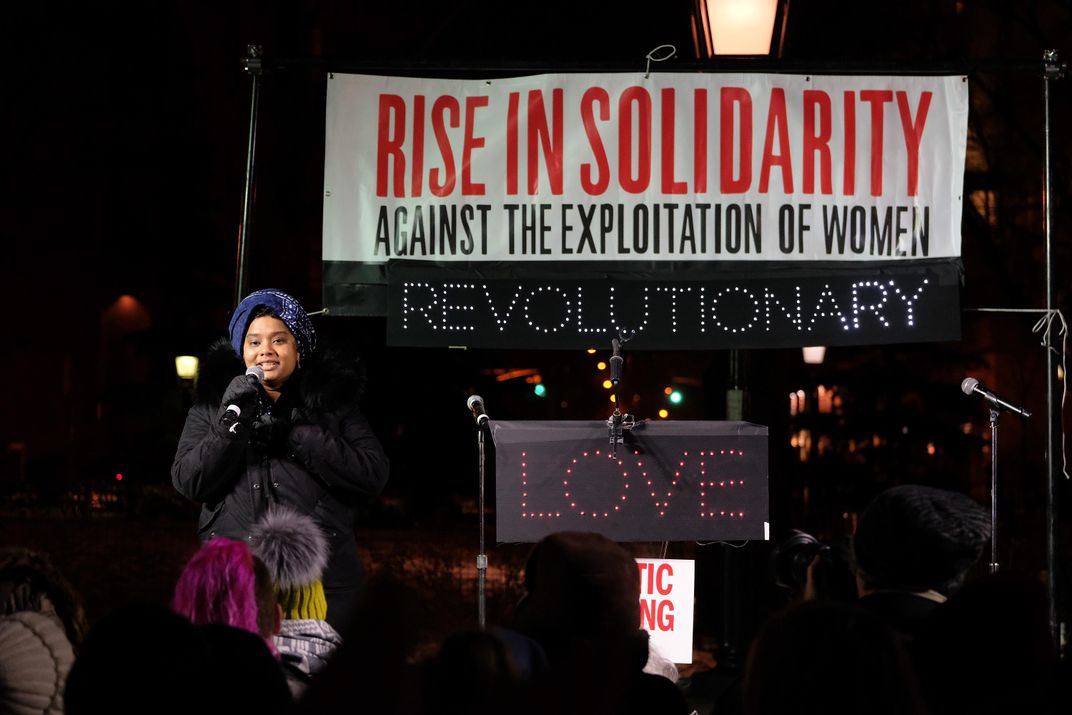
Redemption Song (Bob Marley) by Thenmozhi Soundararajan, Kavin, Gurpal Singh: During a time of historical battles caste-oppressed people around the world are leading around caste abolition, this remix is a love letter to our movement from three different Dalit American artists. Thenmozhi Soundararajan (Dalit Diva), Tamil Dalit reggae artist Kavin, and Brooklyn-based Dalit producer and musician Gurpal Singh. Rarely do Dalit artists get included in South Asian or Asian American playlists so we wanted to mix it up with a remix of the peerless Bob Marley whose Black internationalism has inspired so many movements including Dalit liberation. #Jaibhim and #JaiSavitri —Thenmozhi Soundararajan, executive director, Equality Labs
Boss Lady by Kristina Wong: In 2013 I volunteered in post-conflict Northern Uganda with a microloan organization that gave loans to women. Simultaneously, during the month of my trip, I had met local rappers and was recording a rap album with them. I had scribbled the lyrics into my journal after visiting a village where women, who had survived the Civil War, were learning to read for the first time. It was so incredibly moving to think how women care for communities in invisible ways. —Kristina Wong, artist, Auntie Sewing Squad
Ballad of Corky Lee by Mosaic Sound Recordings, Uke Club Version, featuring Daviana Isa San Angel: Written by my partner Gary San Angel for the kids ukulele club that he started during the pandemic, and sung by our 9-year-old child Davina, this song echoes throughout our household—and honors our friend, “everyone’s uncle,” the iconic Asian American photographer who passed away from coronavirus this year. Like the images that he captured with his camera, the song evokes the legacy of our community elders as an anchor in our present moment. —Gayle Isa, community member (founder and former executive director of Philadelphia's Asian Arts Initiative)
Somewhere Over the Rainbow-What a Wonderful World by Israel Kamakawiwoʻole: The song’s opening dedication to slack-key legend Gabby Pahinui always tugged at my heart. Even before I knew who “Gabby” was, I was moved by how the artist pays tribute to someone of obvious personal significance to him. Then there’s the `ukulele—it makes two familiar songs sound completely unique. Finally, Iz’s voice and pronunciations remind me of my family in Hawaiʻi and my dad—a certain lilt that says, comfort and home. This is the sound of gratitude, longing and hope.—Lisa Sasaki, interim director, Smithsonian American Women's History Museum
In-Between Times by Go Jimmy Go: Go Jimmy Go was the soundtrack and vibe of my 20s—ever optimistic and on the go. Listening to this song reminds me to “change my step to a slide” in ska rhythm even as we persist in the second year of a dual pandemic. —Healoha Johnston, curator of Asian Pacific American Women's Cultural History, Smithsonian Asian Pacific American Center
This playlist is a collaboration of the Smithsonian Asian Pacific American Center (APAC), Center for Folklife and Cultural Heritage (CFCH), Dr. Deborah Wong, and DJ and music archivist Richie Traktivist. Dr. Wong is an advisor for the Smithsonian Folkways Asian Pacific America Music series and former chair of the CFCH advisory council. Special thanks to TRAKTIVIST, a platform whose mission is to bring visibility and sustainability to Asian American artists. Visit the website to search by ethnicity, genre, role and database of the more than 1,500 artists spanning a period from the early 1900s to the present. This list and the contributors’ choices vividly reflect the diversity of AAPI hopes and opinions.
For more music this month, tune in for Music for the Moment: An Asian American Offering on Wednesday, May 26, 7pm, co-produced by Smithsonian Asian Pacific American Center and the Smithsonian Folklife Festival, featuring performances by Ruby Ibarra, DoheeLee, MILCK and June Millington. Streaming from FB and YT .
/https://tf-cmsv2-smithsonianmag-media.s3.amazonaws.com/filer/42/4f/424fadf0-6719-428f-a35c-5897ffea96d6/mobile_apac.png)
/https://tf-cmsv2-smithsonianmag-media.s3.amazonaws.com/filer/45/8c/458cf459-ea15-41c3-9536-b5db94354840/social-media-dimensions.jpg)